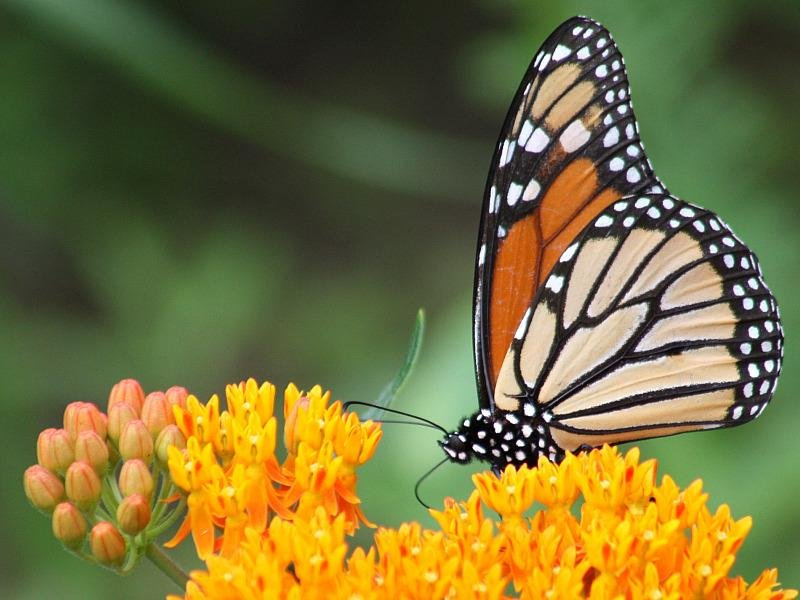It is the time of year that Christmas trees are going up all over. Some of these are natural and some are artificial. No matter what kind you may have in your house, I would bet you would not consider putting a plastic plant out in your yard. This is the case even though there are ones that you can hardly tell are not real. Why is this? Most people will say it is because they are not natural.
Plastic plant vs exotic plant: not as different as you would think

What most people don’t realize is when they are planting exotic plants from other parts of the world they effectively planting plastic plants at least in terms of the value these plants have to lots of our native wildlife.
I have written a few posts about using native plants in your landscapes. One of those was titled “A case for natives“.
In that post, I laid out four reasons for using natives. Number two on my list was that native plants attract a wider variety of local wildlife than do non-natives.
Over the next couple of posts, I want to touch on that subject again.
 A Great Book Suggestion
A Great Book Suggestion
One of the comments on that post was from Pat from the Common weeder blog who asked me if I knew of Doug Tallamy’s book Bringing Nature Home? I did not at the time, but put it on my to read list. I finally got around to reading it a while back.
I won’t turn this into a book review, but Bringing Nature Home: How You Can Sustain Wildlife with Native Plants, Updated and Expanded(*affiliate link) is both easy to read and eye opening.
The main idea of the book is that if they are interested in preventing the extinction of wildlife or just plain like having a variety of birds, butterflies, and other wildlife around, gardeners should plant native plants in their yards.
The whole book is informative and interesting but the plant recommendation lists in the appendix as especially helpful. These are worth the price of the book itself. If you are interested in using native plants you should buy this book, if for nothing else, these lists.
Native wildlife feed on native plants and insects
The reason this is critical is that most native insects can only consume the plants that they evolved with. Our native bugs just can’t consume exotic plants which have evolved in different parts of the planet.

photo credit: hedgerowmobile via photopin cc
For instance the Monarch Butterfly (Danaus plexippus) caterpillar feeds only on North American species of the milkweed family, such as the common milkweed and butterfly weed. According to a paper last year 60 percent of milkweed has been eliminated from the grassland ecosystem. This is one reason the number of Monarch butterflies has dropped to it’s lowest level ever recorded.

photo credit: Distant Hill Gardens via photopin cc
Sure ADULT Monarch butterflies can eat the nectar of exotic plants, such as the Butterfly bush (Buddleia davidii). But to the the caterpillars of the Monarch, these plants are no better than a plastic palm tree.
Not only can the Monarch caterpillar only eat native milkweeds, we have brought over closely related plants that fool the monarchs into thinking they are native milkweeds.
For example, black swallow-worts are exotic plants from Europe. They are extremely toxic to monarch butterfly larvae, which are fooled into laying their eggs on this plant because they are closely related to the milkweed. Black swallow-wort is not a plastic plant, it is more a poison plant in terms of the Monarch butterfly.
Adding natives (i.e. real) plants to your landscape can be simple
If you want to have Monarchs around in the future, go ahead let some milkweed grow in your yard. This was something my wife made me do this summer.
We had milkweed growing right next to our front walk in a bad spot and she would not let me kill it. I am planing on buying some butterfly weed (Asclepias tuberosa) seeds next year to plant with some milkweed in a better spot in hopes my wife will let me remove the milkweed from this one spot.

photo credit: donsutherland1 via photopin cc
You can do the same and plant some butterfly weed or you can do what my wife had our kids do and take milkweed seeds and blow them all over the neighborhood.
Please don’t tell the guy across the street!
It would probably be best for the Monarchs to do this in an area where the plants won’t be mowed down or sprayed by your perfect lawn obsessed neighbor.
Next post I will compare two types of trees. An over planted “plastic” one and an under planted native.